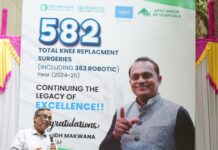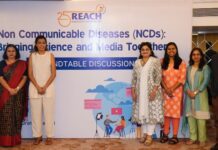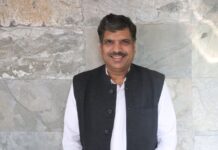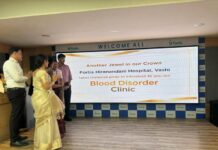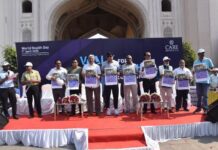New Delhi, July 22, 2014 –
India HIV/AIDS Alliance is at the 20th International AIDS Conference (AIDS 2014) to highlight how vulnerable and marginalised populations most at risk in the HIV epidemic remain stigmatised, discriminated against and criminalised. As a result, millions are denied their human rights and essential access to basic health services. Without action for these populations, we will not achieve a sustainable response to HIV and AIDS.
Focus Issues
Advocacy against Section 377 of the Indian Penal Code
The Indian Supreme Court recriminalized same-sex behaviour between consenting adults in December 2013, a reversal of the Delhi High Court ruling five years ago that legalised homosexual behaviour. The return of an archaic law from the colonial era has become an immediate barrier to HIV prevention and other service uptake for men who  have sex with men (MSM), transgenders (TG) and hijras in India and an obstacle to fulfilling the basic human rights of these populations already underground and highly vulnerable to the epidemic.
have sex with men (MSM), transgenders (TG) and hijras in India and an obstacle to fulfilling the basic human rights of these populations already underground and highly vulnerable to the epidemic.
Alliance India is actively committed to fight against this discriminatory law through “207 against 377”. Our national campaign brings together the 207 partners that implement Pehchan to advocate jointly against this regressive law. Supported by the Global Fund and implemented by a consortium led by Alliance India, Pehchan is a national HIV prevention programme strengthens and builds the capacity of 200 community-based organisations to provide effective, inclusive and sustainable HIV prevention programming in 17 states in India for more than 450,000 MSM, transgenders and hijras.
Out of the Shadows: Expanded Attention on Women who Inject Drugs and on Harm Reduction
Women who inject drugs in India remain largely neglected in the current HIV response. Marginalised and at risk, these women have inadequate access to services and information they need to protect their health and wellbeing. Unsafe sexual behaviour and shared injecting equipment increase their risk for HIV and hepatitis C infection. Women who inject drugs need a comprehensive harm reduction response that provides accessible, targeted, and quality interventions to improve their health and protect their rights. “Out of the Shadows” is a new film that shares the voices of women from India’s drug-using community and examines their urgent need for services responsive to their requirements.
Women who inject drugs are a priority for Alliance India’s harm reduction programming. Harm reduction lessens risks associated with injecting including vulnerability to HIV and hepatitis C through overdose management, abscess care, oral substitution therapy, and needle and syringe exchange programmes. Funded by the Government of Netherlands, our Hridaya programme expands harm reduction services for people who inject drugs (PWID), their partners and families. These efforts are complemented by our European Union-supported Asia Action on Harm Reduction in India initiative which supports advocacy to increase access to comprehensive harm reduction services and reduce stigma, discrimination and abuse towards these vulnerable populations.
Massive Scale-up of Care & Support for PLHIV in India
HIV treatment is a lifelong commitment. As more people get on treatment in India and elsewhere, it becomes increasingly urgent to ensure that people living with HIV on treatment are provided the care & support they need to thrive. India has committed to getting more than one million PLHIV on treatment by the end of 2015. This will require a scale-up of ART Centres and related expansion of care & support across the country.
Supported by the Global Fund, our Vihaan programme is a national initiative that is establishing 350 Care & Support Centres in 31 Indian states and territories to expand access to services, increase treatment adherence, reduce stigma and discrimination, and improve the quality of life of people living with HIV. Vihaan is a community-based and PLHIV-led initiative that is transforming the impact of India’s treatment investment.
Investing in the HIV & AIDS Response: A Gap for Communities and Civil Society
After South Africa and Nigeria, India has the world’s third highest caseload with 2.1 million people living with HIV. As international funders reduce investments in Middle Income Countries, it is expected that national governments, including India, should step up to fund the response to HIV/AIDS. While the Government of India has committed to a budget in which it covers 75% of the cost of the new national strategy with domestic funds, actual spend is difficult to monitor. Although the country has made great progress in the last decade, there is growing evidence that the epidemic is no longer stable with increasing HIV incidence in areas of the country earlier considered low prevalence.
Governments can’t end AIDS alone. India needs an HIV response that brings together the experience and strengths of the government, civil society and the private sector at every level. Without donor support, civil society HIV responses are starved for the support they need. HIV is both a medical challenge and a social phenomenon. Government commitments to funding clinical services and treatment must be complemented by true collaboration on HIV prevention, care and support, in which civil society at every level is a partner to reduce vulnerability ensuring an enabling environment for sustainable change. Alliance India advocates to ensure a robust and broad-based HIV response in India.
Alliance India Representatives at AIDS 2014
Staff members of India HIV/AIDS Alliance are available to discuss the above focus issues, related priorities, and the current situation for HIV/AIDS in India. Staff participating in AIDS 2014 represent communities most affected by the epidemic in India including men who have sex with men (MSM), transgenders
(TG), female sex workers (FSW), people living with HIV (PLHIV), and people who inject drugs (PWID). BWI




